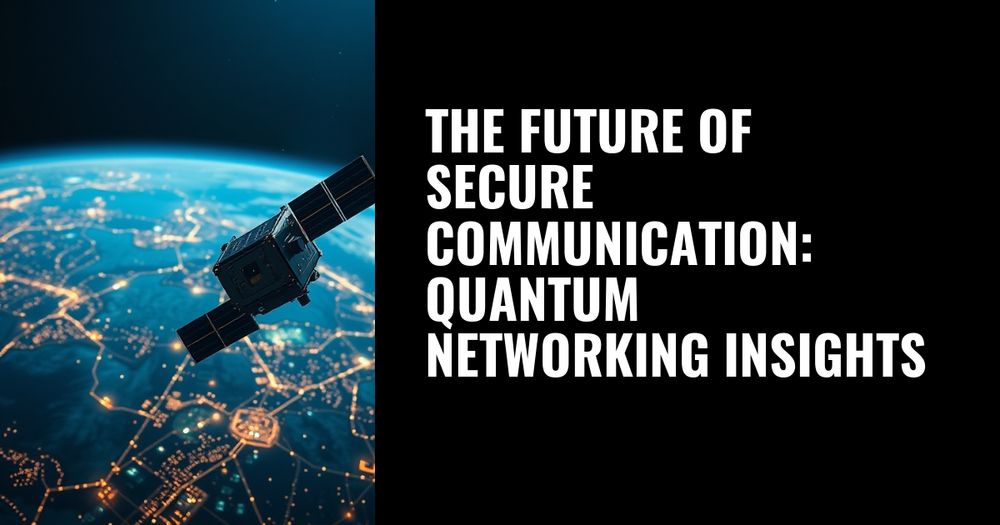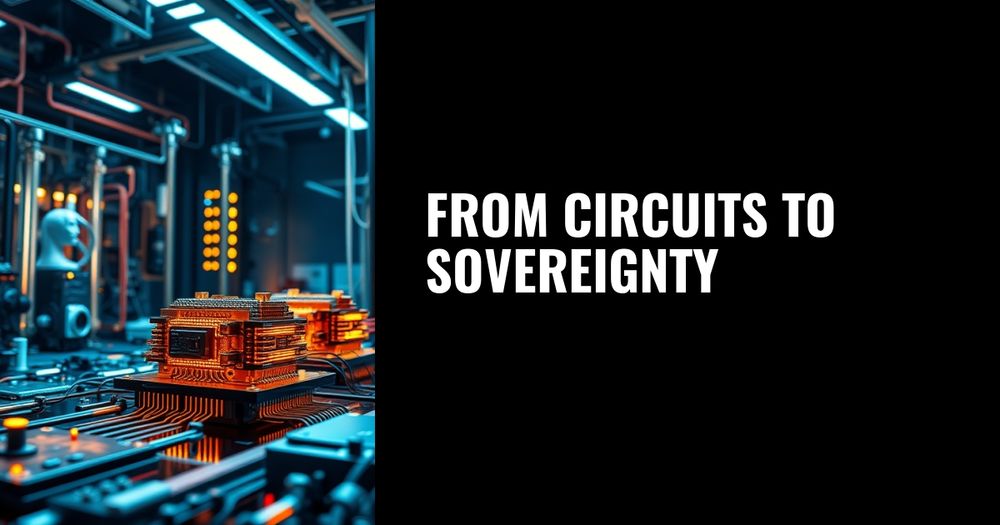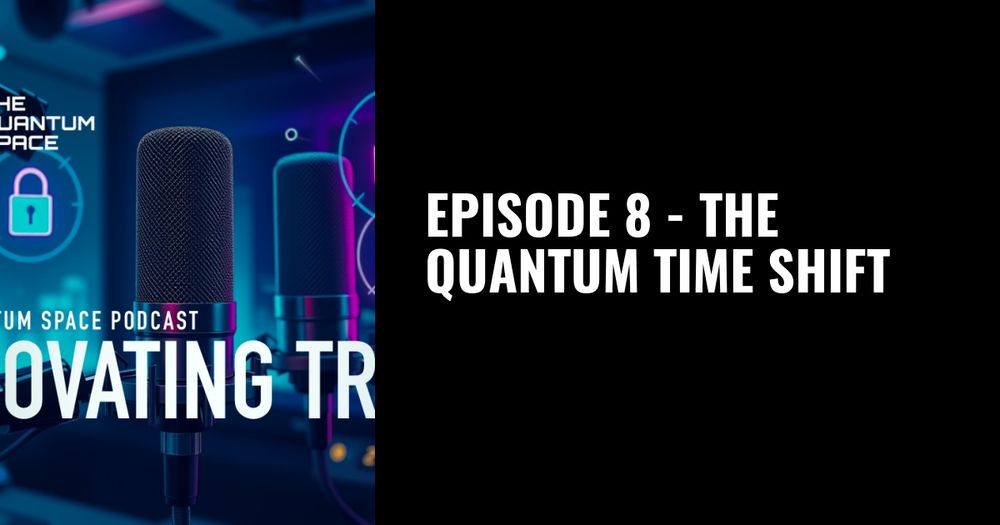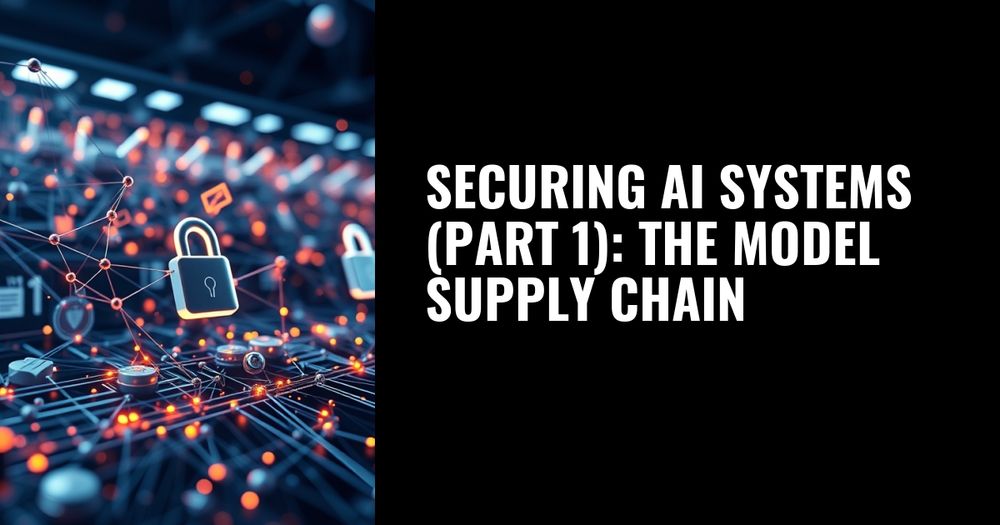
The Quantum Miners
The article discusses the implications of quantum computing on blockchain security, particularly the vulnerabilities posed to proof-of-work systems and elliptic-curve cryptography. As quantum hardware advances, it could disrupt mining, consensus, and transaction security, necessitating a shift towards post-quantum cryptography. Future governance and regulatory frameworks for quantum resilience are crucial for blockchain's survival.
The Quantum Miners
The article discusses the implications of quantum computing on blockchain security, particularly the vulnerabilities posed to proof-of-work systems and elliptic-curve cryptography. As quantum hardware advances, it could disrupt mining, consensus, and transaction security,…
10.11.2025 08:01 — 👍 0 🔁 0 💬 0 📌 0

The Future of Secure Communication: Quantum Networking Insights
In 2025, significant advancements in quantum communication, including a record 12,900-kilometer satellite link, room-temperature quantum memory, and hybrid networks, mark a shift toward commercial viability. These breakthroughs promise secure, unhackable communications with far-reaching implications across finance, defense, and telecommunications, although challenges like scalability and cost remain.
The Future of Secure Communication: Quantum Networking Insights
In 2025, significant advancements in quantum communication, including a record 12,900-kilometer satellite link, room-temperature quantum memory, and hybrid networks, mark a shift toward commercial viability. These breakthroughs…
04.11.2025 08:00 — 👍 0 🔁 0 💬 0 📌 0

EPISODE 10 – The Ghost in The Machine
The latest Innovating Trust podcast features Steve Atkins exploring parallels between quantum physics and the supernatural, discussing topics like entangled particles and quantum immortality in a darkly playful manner.
EPISODE 10 – The Ghost in The Machine
The latest Innovating Trust podcast features Steve Atkins exploring parallels between quantum physics and the supernatural, discussing topics like entangled particles and quantum immortality in a darkly playful manner.
30.10.2025 08:04 — 👍 0 🔁 0 💬 0 📌 0

PART 3. Quantum Time as Infrastructure: Computing and Communication
Introduction Quantum computing has often been defined by its hardware: qubits, gates, superconducting circuits, and trapped ions. But behind every computation lies something even more fundamental: a clock. In the classical world, timing is background noise — a solved problem. In the quantum world, timing is fragile, essential, and increasingly a resource in itself. If Part 1 of this series unpacked the theory of quantum time, and Part 2 traced the experimental breakthroughs, this final part shows why time is becoming the hidden operating system of quantum technologies.
PART 3. Quantum Time as Infrastructure: Computing and Communication
Introduction Quantum computing has often been defined by its hardware: qubits, gates, superconducting circuits, and trapped ions. But behind every computation lies something even more fundamental: a clock. In the classical world,…
15.10.2025 07:00 — 👍 0 🔁 0 💬 0 📌 0

PART 2. Quantum Time in the Lab: Experiments and Breakthroughs
Introduction For decades, quantum time was treated as a theoretical playground — a realm of paradoxes and possibilities, but far from the bench tops of laboratories. That perception changed in the 2020s. In 2025 alone, physicists demonstrated that time could be authenticated with entanglement, compared across nations with breathtaking accuracy, and even manipulated in ways that challenge causality itself. What once sounded like metaphysics is now being wired into networks, tested on photons, and measured with optical clocks.
PART 2. Quantum Time in the Lab: Experiments and Breakthroughs
Introduction For decades, quantum time was treated as a theoretical playground — a realm of paradoxes and possibilities, but far from the bench tops of laboratories. That perception changed in the 2020s. In 2025 alone, physicists…
14.10.2025 07:00 — 👍 0 🔁 0 💬 0 📌 0

Securing AI Systems (Part 2): Red-Teaming and Evaluations
This content discusses the evaluation and testing of AI systems for safety, privacy, and bias in a structured manner. It emphasizes the importance of robust evaluation programs that anticipate failures, utilize community standards, and define metrics tied to decision-making. Automation, human red-teaming, and meticulous documentation are also highlighted as key components for ongoing improvement and accountability.
Securing AI Systems (Part 2): Red-Teaming and Evaluations
This content discusses the evaluation and testing of AI systems for safety, privacy, and bias in a structured manner. It emphasizes the importance of robust evaluation programs that anticipate failures, utilize community standards, and…
07.10.2025 07:02 — 👍 0 🔁 0 💬 0 📌 0
Software IP protection, fintech and mobile payments.
Sou caseiro, não gosto de barulho, e Deus acima de tudo!
Direita, sempre direita!! right, always right!!! Bolsonaro and trump!
Cybersecurity Reporter, Ars Technica: https://arstechnica.com/author/dan-goodin/ Hungry for tips. Text me on Signal: DanArs.82. "The world isn’t run by weapons anymore, or energy, or money. It’s run by little 1s and 0s, little bits of data."
Cyber guy. Former NSA cybersecurity director and chief of TAO. Lover of memes. Warning - occasional outrageous Christmas light content.
Cybersecurity correspondent at Reuters; former Mother Jones, CyberScoop. Will bore you with skateboarding, UFO lore or Denver Broncos minutiae on request. Signal: ajvicens.57, additional contact methods: https://tinyurl.com/47jc45h7
NPR Correspondent covering technology and national security.
Send me a tip: Text JennaMcLaughlin.54 on Signal from personal (nonwork) devices.
Cybersecurity Specialist, Public Speaker, Ex-Hacker.
https://marcushutchins.com
Director of Cybersecurity @eff.org
Co-founder of @stopstalkerware.bsky.social
These opinions are my own, not my employers’
I did a TED talk once
Professor of Natural and Artificial Intelligence @Stanford. Safety and alignment @GoogleDeepMind.
Interested in cognition and artificial intelligence. Research Scientist at Google DeepMind. Previously cognitive science at Stanford. Posts are mine.
lampinen.github.io
Artificial Intelligence Expert
Paul Davies
You won't believe what comes next in A.I.
Follow me if you are interested in Artificial Intelligence
Professor of Ethics & Technology @ Hertie School, Berlin. Interests: Artificial & Natural Intelligence; Behavioural Ecology; Cooperation; Digital Governance. Social media policy: https://joanna-bryson.blogspot.com/2024/10/guidance-to-my-social-media.html
The AI Now Institute produces diagnosis and actionable policy research on artificial intelligence.
Find us at https://ainowinstitute.org/
Quantum computing, algorithms and machine learning at Google DeepMind. Opinions are my own.
Assistant Professor at Cornell. CS theory, cryptography, quantum computing. he/him
Computer Scientist interested in cyber security and quantum computing
Physicist who dabbles in Quantum Computing and AI.
The Network is the Computer. Still truer now than ever.
Professor at the University of Sydney. Quantum computing enthusiast.
Views expressed here are my own.
Quantum Computing systems, Quantum Internet, quantum education.
Caltech, USC, Keio.
West Virginia, LA, Kamakura.
Research and education in physics with a focus on quantum computing, communication and sensing with team Qudev (https://qudev.phys.ethz.ch/) at ETH Zurich. Team lead at the ETHZ-PSI Quantum Computing Hub. Director of the Quantum Center at ETHZ.





























